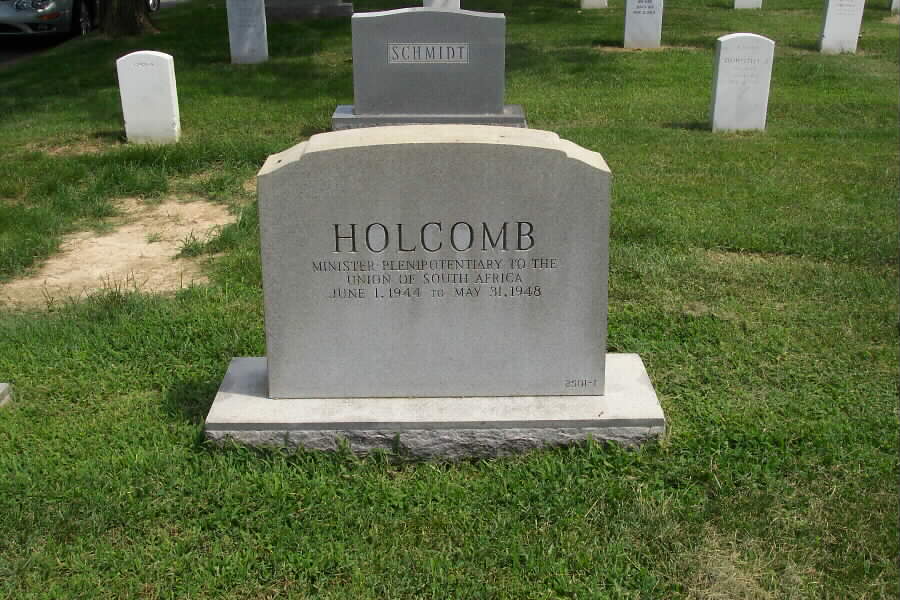General Thomas Holcomb, seventeenth Commandant of the United States Marine Corps, died May 24, 1965, in New Castle, Delaware, at the age of 85. Born on August 5, 1879, in New Castle, he attended private schools there until 1893, when his family moved to Washington, D. C. He was graduated from Western High School in Washington in 1897, and was appointed a second lieutenant in the Marine Corps on April 13, 1900.
General Holcomb was on detached duty with a company of Marines organized for service with a Marine battalion attached to the North Atlantic Fleet from September 1902 to April 1903. He was promoted to first lieutenant that year. He served in the Philippine Islands from April 1904 to August 1905, and in October and November 1906.
He was on duty with the Legation Guard, Peking, China, for one year in 1905 and 1906. He was appointed a captain in 1908, and from December of that year to July 1910, he again served with the Legation Guard at Peking. He continued on duty in Peking as Attache on the Staff of the American Minister for study of the Chinese Language and remained on that duty until May 1911. In December of that year, he was again ordered to the Legation at Peking to continue his study of the Chinese language, and remained in that capacity until May 1914.
General Holcomb has been prominently identified with the development of rifle shooting, and served as Inspector of Target Practice in the Marine Corps from October 1914 to August 1917. While serving in that capacity he was promoted to the rank of major in 1916. He was a member of the Marine Corps Rifle Teams of 1901, 1902, 1903, 1907, 1908, and 1911, and of teams representing the United States in the Palma Trophy Match in 1902 and 1903.
From August 1917 to January 1918, he commanded the Second Battalion, Sixth Marine Regiment, at the Marine Barracks, Quantico, Virginia, in preparation for overseas duty. From February 1918 to July of the next year, following his appointment to lieutenant colonel, he served with the A. E. F. in France. He commanded the Second Battalion from August 1918 and served as Second in Command of the Sixth Regiment, taking part in the Aisne Defensive (Chateau Thierry), the Aisne-Marne Offensive (Soissons), the Marbache Sector, the St. Mihiel Offensive, the Meuse-Argonne (Champagne) Offensive the Meuse-Argonne (Argonne Forest) Offensive, and the March to the Rhine in Germany following the Armistice.
In recognition of his distinguished services in France, he was awarded the Navy Cross, the Silver Star with three Oak Leaf Clusters, a Meritorious Service Citation by the Commander-in-Chief, A. E. F., the Purple Heart, and was three times cited in General Orders of the Second Division, A. E. F. The French Government conferred on him the Cross of the Legion of Honor, and three times awarded him the Croix de Guerre with Palm.
From September 1922 to June 1924, he commanded the Marine Barracks, Naval Station, Guantanamo Bay, Cuba, and on his return to the United States was ordered to the Command and General Staff School of the Army at Fort Leavenworth, Kansas. Upon completion of the course as a Distinguished Graduate, in June 1925, he was ordered to Headquarters Marine Corps for duty in the Division of Operations and Training, where he remained until June 1927.
From August of that year to February 1930, General Holcomb commanded the Marine Detachment, American Legation, Peiping, China. While serving there he was promoted to colonel. In June 1930, he went to the Naval War College as a student, Senior Course. He was graduated in June 1931. He was then ordered to the Army War College, graduating a year later.
From June 1932 to January 1935, prior to his appointment to brigadier general, he served in the Office of Naval Operations, Navy Department. He then served as Commandant of the Marine Corps Schools at Quantico, Virginia, until November 1936, when he was ordered to Marine Corps Headquarters to assume the office of the Major General Commandant on December 1, 1936
With his advancement to lieutenant general on January 20, 1942, pursuant to an Act of Congress, the Commandant became the highest ranking officer ever to command the Marine Corps up to that time.
On August 5, 1943, when Lieutenant General Holcomb reached the regular retirement age, the President announced he was continuing General Holcomb as Commandant of the Marine Corps, in recognition of his outstanding services in that capacity.
After nearly 44 years as a Marine, General Holcomb was retired on January 1, 1944. Because he had been specially commended for his performance of duty in actual combat, he was advanced one rank on the retired list in accordance with a newly passed Act of Congress. He thus became the first Marine ever to hold the rank of general. In a letter to General Holcomb, the late Secretary of the Navy Frank Knox said, “You will be the first officer of the Corps to hold the rank of general — the highest rank in our armed forces. I know of no other officer to whom that distinction more fittingly belongs.”
During General Holcomb’s tour of duty as Commandant, the Marine Corps expanded from 16,000 men to about 300,000 men and women. The general was awarded the Distinguished Service Medal for his outstanding work as Commandant in April 1944.
On March 9, 1944, the President nominated General Holcomb for the position of United States Minister to the Union of South Africa. The nomination was confirmed by the Senate on March 20 and the general was commissioned as such on the next day.
He resigned as Minister to the Union of South Africa on June 15, 1948, and lived at Rose Croft, St. Mary’s City, Maryland, where he managed the family farm until 1956. He then moved to Chevy Chase, Maryland, where he continued his interest in gardening. In 1962, he moved to an apartment in “The Towers” in Washington, D. C. Following a serious illness in the spring of 1964, he returned to his native New Castle, Delaware, making his home at 125 East Third Street.
General Holcomb’s wife was the late Beatrice Miller Clover of Washington, D. C. They were married in 1916. Mrs. Holcomb died in 1962. Their only son, Franklin P., served as a Marine officer during World War II, and is now a lieutenant colonel, United States Marine Corps Reserve, (Reserved.)
A list of General Holcomb’s medals and decorations includes: the Navy Cross; the Distinguished Service Medal; the Silver Star Medal with three Oak-Leaf Clusters; the Purple Heart Medal; the Expeditionary Medal, China; the World War I Victory Medal with Aisne, Aisne-Marne, St. Mihiel, Meuse-Argonne and Defensive Sector clasps; the Army of Occupation of Germany Medal; the American Defense Service Medal with Base clasp; the Asiatic-Pacific Campaign Medal with one bronze star, Guadalcanal; the American Campaign Medal; the World War II Victory Medal; the French Legion of Honor; the French Croix de Guerre with three palms; the Naval Order of Merit, First Class (Cuban award), 1943; the Knight Grand Cross (Netherlands), 1944; and the French Fourragere.
NOTE: His wife was the daughter of Richardson Clover, Rear Admiral, United States Navy.
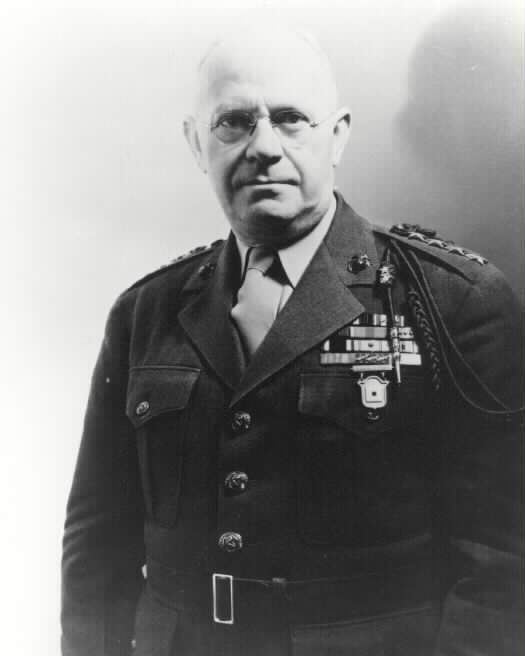
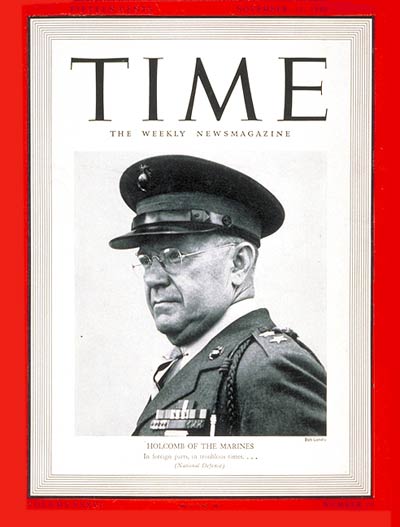
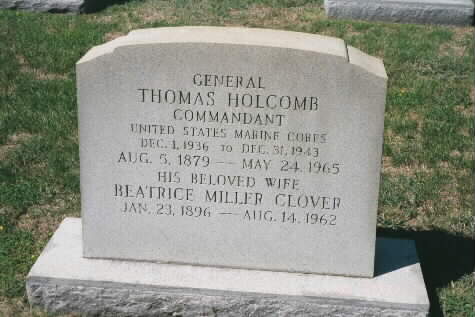
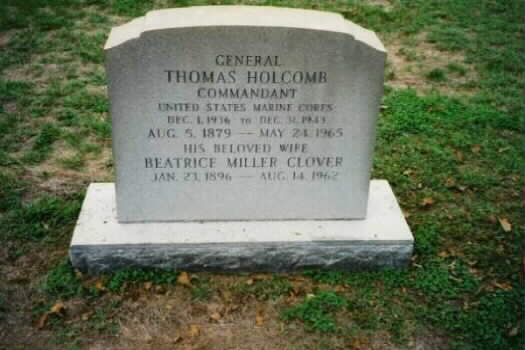
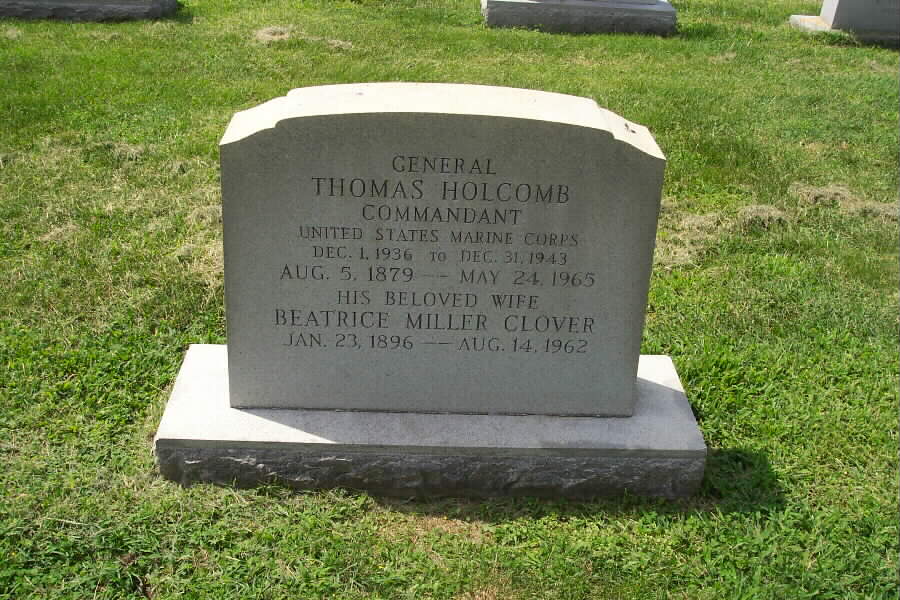
Michael Robert Patterson was born in Arlington and is the son of a former officer of the US Army. So it was no wonder that sooner or later his interests drew him to American history and especially to American military history. Many of his articles can be found on renowned portals like the New York Times, Washingtonpost or Wikipedia.
Reviewed by: Michael Howard


